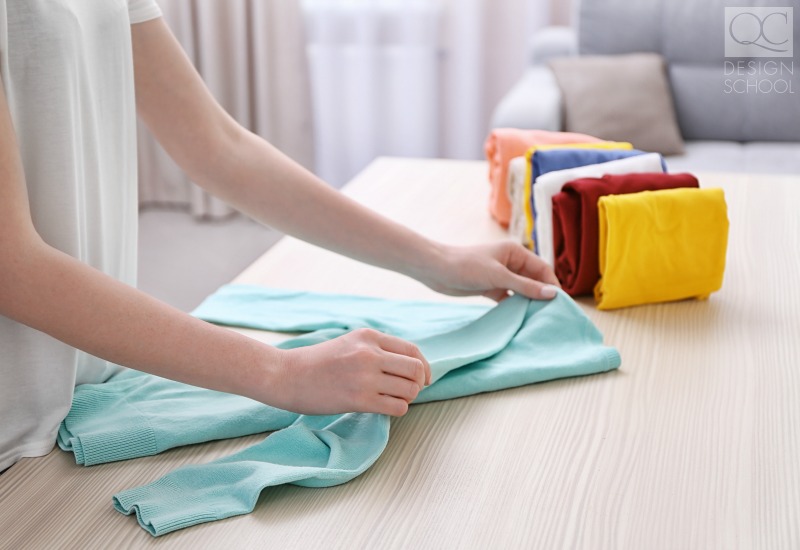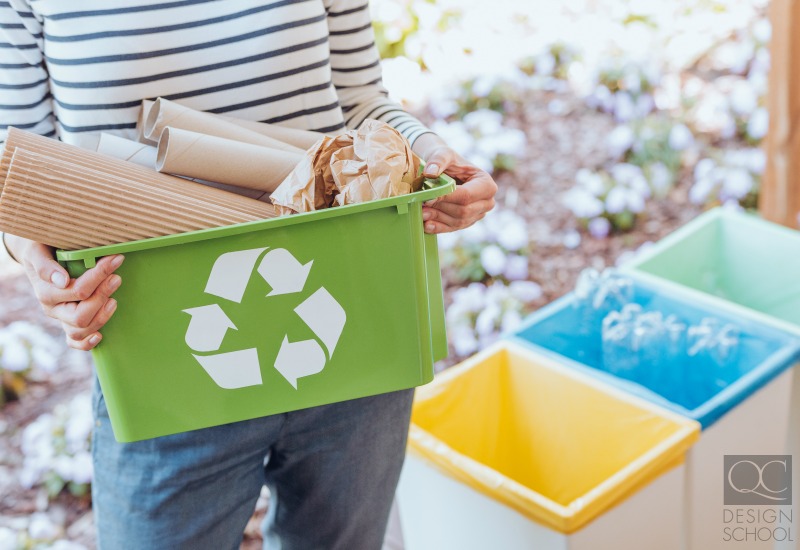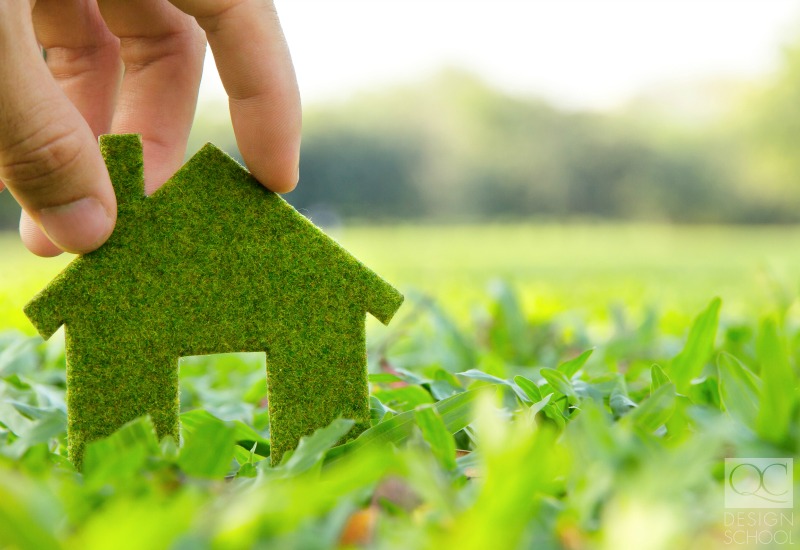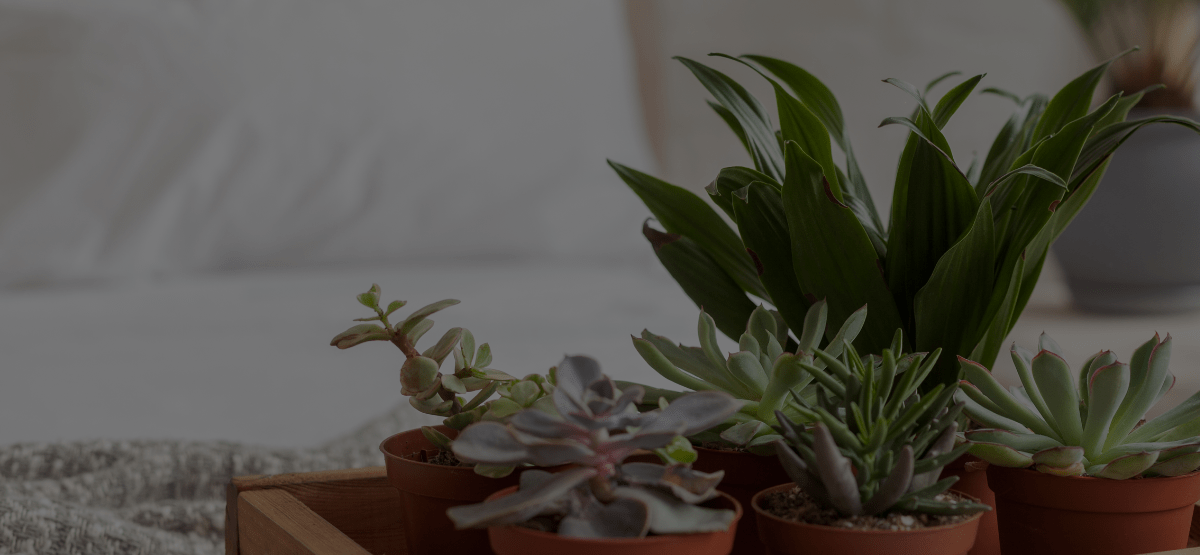Whether it’s your own personal motivation or you just have an ambitious client, you should be well-versed in green design. Thankfully, it’s easier than ever to incorporate eco-friendly practices into your professional organizing business. Some design programs have green design units integrated into the course content. In fact, you can even get certified in green professional organizing!
But if you didn’t have the pleasure of taking green study units as part of your training, not to worry! You have enough skills and knowledge from your professional organizer training to blend green design seamlessly into your services. Keep reading to find out how!
Taking back space
At the center of professional organizing is the concept of taking back their space. That’s why decluttering must happen before organizing! Some misguided clients may believe that they simply don’t have enough space for their stuff. But they may, instead, just have too much stuff for their space.
If you’re working with a client who wants to live an eco-conscious lifestyle, they’re probably going to be fairly willing to make changes—even if it’s a bit fussy to begin with. A lot of people actually misuse their space! Improperly storing belongings can lead to a lot of wasted space. Take a cue from the KonMari method of folding—your clients will be better able to see what they own while freeing precious storage real estate! But you need to guide them towards a new way of thinking before you can start sorting their belongings!
Convince them that their home environment deserves the same respect they dole to the outside world. You need to change their perspective! If they are against polluting the ecosystem, why pollute their home? If they’re content with their home, and actually look forward to returning to it, their days will get a whole lot better!

Dealing with Clutter
Convincing clients to let go of their belongings is a difficult task! Even if they want to downsize and declutter their homes, when they come face-to-face with their stuff, it’s another story.
Your clients may hoard items they don’t need because they believe it can be used later. Being environmentalists, they might not want to add to landfills. They view the item as having the potential to be useful again, but don’t have the know-how or parts to fix it up!
So what can they do? If it’s a broken appliance or electronic, they may be able to sell or donate the gadget parts. And if their clothes have unmendable holes in them? Turn them into rags! But while some items are easy to recycle, other must be tossed. Expired foods, medicine, and makeup are at the top of the list.
Another option is to upcycle. Does your client have a hankering for DIY? Many broken items or items that no longer fulfill their intended use could use some DIY magic! Upcycling can be something small like using an empty toilet paper roll to bunch long cords together. Or it can be as project-driven as turning an old blanket into a hammock for the yard. Upcycling is a fantastic way to get the most out of your items—and the earth with thank you, too!

Green Products
The next step after you declutter? Clean up the new space! When it comes to cleaning products, many of the most common household cleaners can be made using common household items! White vinegar, baking soda, and lemon juice can be used in all sorts of combinations– back to that DIY ethic we were talking about!
For other products, look for green labels – Greenguard, EcoLogo, and Energy Star for trusted eco-friendly products. Products that are certified under these programs undergo rigorous approval processes! Your clients may also be interested in investing in sustainable materials.
If your client fancies wooden shelving or furnishings, check for FSC (Forestry Stewardship Council) approval. These products contain wood materials from sustainable and diverse forests. And if they want a rustic feel to their furniture? Reclaimed wood adds character to a room! These wood pieces can be used to create beautiful storage spaces for your client. The best part? Each piece is 100% unique for the offbeat homeowner.

Adding improvements
We just got rid of all the clutter, why are we adding new items again? Well, there’s a huge difference between the useless clutter you helped your client clear out and the items you’re adding in now. After the space is decluttered and cleaned, there might be a need for new functional furnishings, décor, and storage solutions.
After all the surfaces, nooks, and crannies are cleaned, why not clean the air, too? The simplest solution to introduce fresh air into the home is to open the windows. But you can’t control the quality of the air that comes in. When you’re rounding out the final stages of the organizing process, recommend adding air-purifying plants as home decor. Not only are they a great addition to the decor of any room, but they also improve air quality in the home. Cleaner air means more productive spaces and improved health!
The road to eco-living can sometimes be an uphill battle. Thankfully, your services provide clients with a great launch-pad to forge a new lifestyle. Professional organizing is an on-going process! Your client will (hopefully) take your recommendations to heart even after you leave. If you establish a routine for them to follow, their active participation could satisfy their environmentalist drive.
Do you have any other eco-friendly decorating ideas? Let us know!


